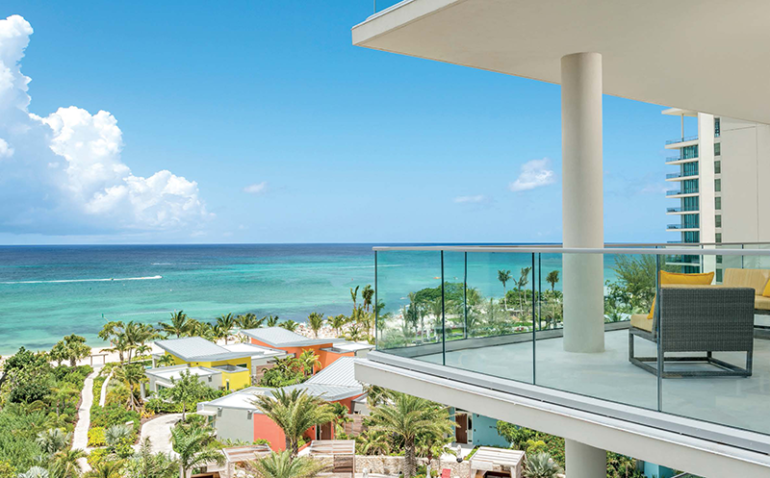 “DID YOU HEAR THEM THIS MORNING?” Lauren Ebanks asks, with a chuckle in her voice, pointing to a flock of clucking hens crossing the street.
“DID YOU HEAR THEM THIS MORNING?” Lauren Ebanks asks, with a chuckle in her voice, pointing to a flock of clucking hens crossing the street.
While some people come to Grand Cayman, the largest of the Cayman Islands, for endless white beaches and to snorkel among stingrays, turtles and starfish, Ebanks, an insider who has lived in this British Caribbean outpost for most of her life, recognizes her balmy tax-free haven as the capital of free-range chickens.
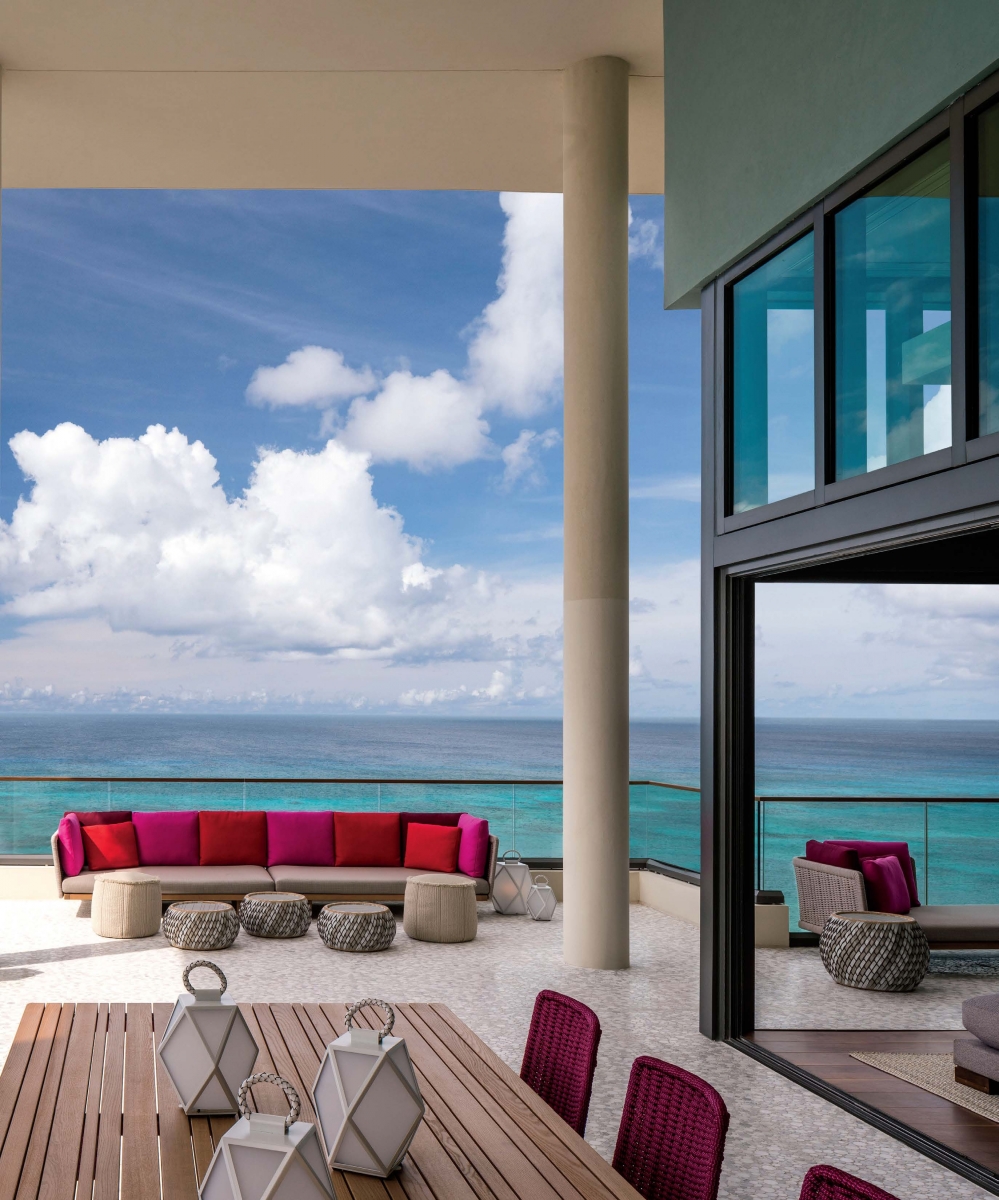 The birds were set loose more than a dozen years ago by Hurricane Ivan, which leveled houses and backyard coops across the island. When the storm subsided, the AWOL poultry promptly multiplied.
The birds were set loose more than a dozen years ago by Hurricane Ivan, which leveled houses and backyard coops across the island. When the storm subsided, the AWOL poultry promptly multiplied.
The rest of the story wasn’t as funny. Five months after the hurricane, the beautiful islands still didn’t have power and fewer than half the resorts bordering Grand Cayman’s famed Seven Mile Beach were functional. The storm damage was catastrophic, and without Ebanks’ employer, Dart Real Estate, leading the rebuilding charge, the island might still be recovering.
George Town, the capital where cruise ships dock, now has rows of quaint red metal-roofed buildings that now adhere to stringent building codes. North of it, west-facing Seven Mile Beach is dotted with peak-roofed resorts also made of concrete and steel to weather storms that come in from the east. And a new fortified township called 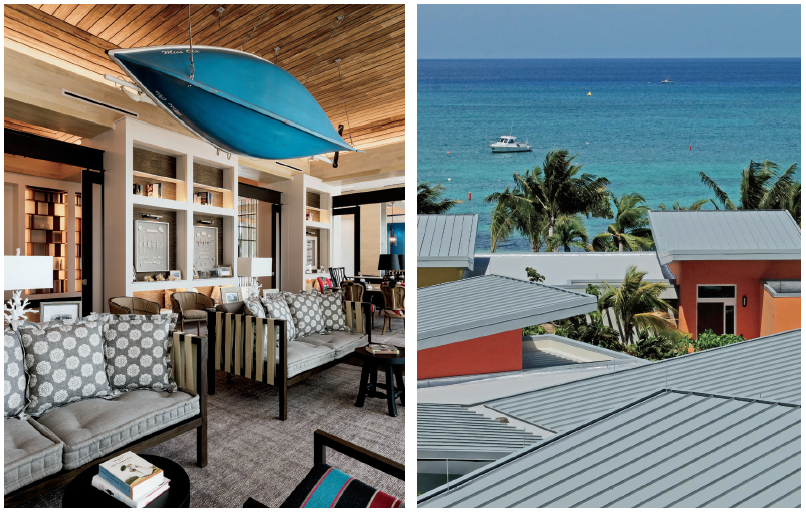 Camana Bay, with a central tower fitted with colorful shutters, evokes bungalows of the kind seen in nearby Jamaica or Cuba.
Camana Bay, with a central tower fitted with colorful shutters, evokes bungalows of the kind seen in nearby Jamaica or Cuba.
However, Dart’s latest building project on the north end of Seven Mile Beach — the Kimpton Seafire Resort + Spa and residences, designed by San Francisco’s SB Architects — is deliberately different.
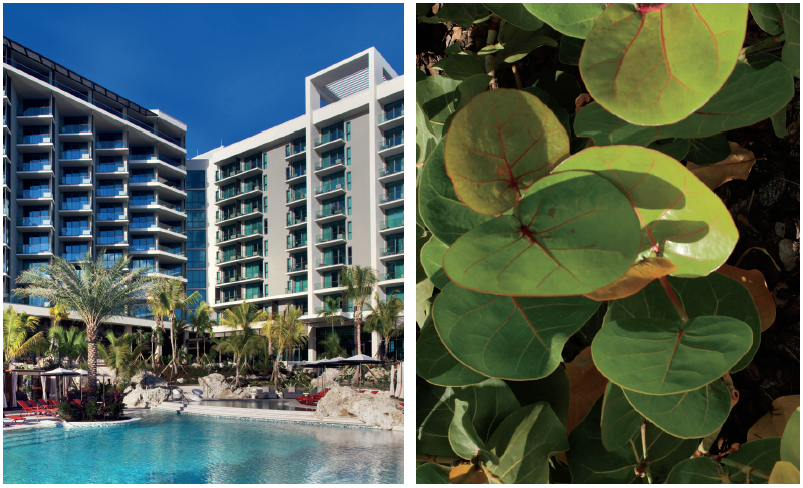 Rectangular, modern and standing 10 stories high, it is the island’s tallest structure.
Rectangular, modern and standing 10 stories high, it is the island’s tallest structure.
At first Dart considered renovating a motel building that stood right on the water, and San Francisco’s Kimpton Hotel & Restaurant Group, which specializes in boutique establishments in old repurposed buildings, was going to run it. But Dart’s decision to tear down the motel offered Kimpton a unique opportunity to launch its first and only international boutique resort in a new building.
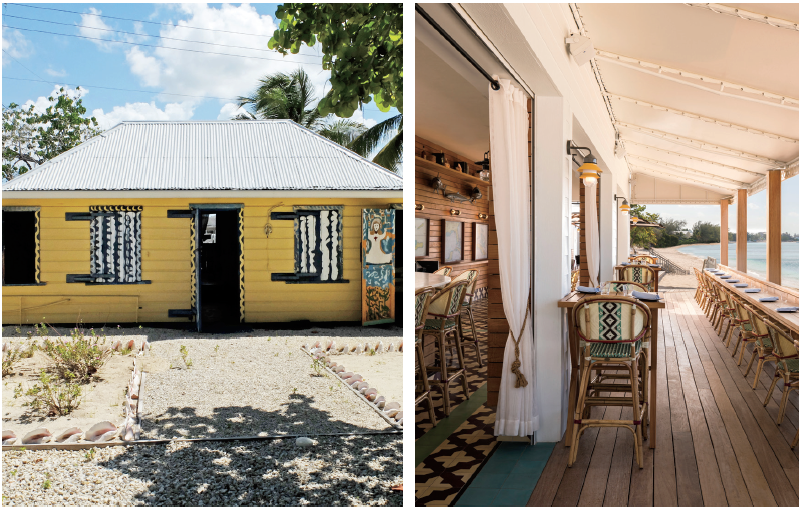 As luck would have it, the design team also included interior designers Powerstrip Studio from Los Angeles and Florida-based EDSA landscape architects — firms that SB Architects had collaborated with on previous projects.
As luck would have it, the design team also included interior designers Powerstrip Studio from Los Angeles and Florida-based EDSA landscape architects — firms that SB Architects had collaborated with on previous projects.
“We spoke the same language,” architect Scott Lee, a principal at SB, says.
For inspiration, they toured must-see places on the island such as lighthouses, a historic wattle and daub cottage that belonged to Caymanian artist Miss Lassie (surviving the hurricanes because of its sheltered location next to a coral reef ), and Pedro St. James, a restored 1780s building that was home to one of Cayman’s founding Colonial families and, ironically, also where slavery was publicly decried in 1835.
“It was interesting but we did not see anything to emulate,” Lee says.
Even resorts restored only a decade ago had “hat-like roofs on Caribbean-style structures that were the antithesis of what we envisioned,” he adds. “We were thinking of an ocean-side development with views of the sea but we wanted something for the 21st century.”
Because the relatively flat, 12-acre lot was deep, it made sense to build a tall L-shaped building in the foreground, angled to form a sheltered garden between it, a twin condominium structure and the sea. Thus, although the finished reinforced concrete buildings do not face the ocean directly, their high-ceilinged rooms and staggered verandas with elegant concrete pilotis all have spectacular ocean views. Washable wood-pattern ceramic tile floors inside and outside the rooms are equipped with storm drainage; the foam insulated stucco walls stay cool in the summer; and large operable windows and doors have hurricane-rated laminated glass.
“In the middle of the grounds, EDSA created a parklike setting with pools and water spaces, which we punctuated with colorful bungalows with inverted butterfly roofs that also do not block views,” Lee says.
The new, mounded topography they created for the once-featureless site allowed the Seafire hotel to have a ground floor 22 feet above grade.
“When guests walk out of their car and into the glass-walled lobby they immediately have a commanding view of the sea,” Lee says.
Another advantage of the higher ground floor: designers were able to tuck in a spa with natural light, back-of-house facilities, and a garage under the lobby and link it all seamlessly to the condominium tower next door.
Powerstrip Studio founders Dayna Lee and her husband, Ted Berne — both former set designers who became interior designers for Barry Sternlicht’s then-new W hotels — brought theatrical pizzazz to the enterprise.
“Kimpton does not take itself super seriously and they wanted something playful and not just monastic tone on tone,” Dayna Lee says. “So we tried to express the community of the Grand Cayman, which is a British colony infused with hybrid cultures from Jamaica to America.”
References to shutters, porches, basketry and nautical traditions from Caribbean islands are interwoven, sometimes overtly, into patterns and motifs throughout the hotel. For instance, sailcloth covers the long lobby ceiling; as a nod to traditional wattle and daub buildings, Powerstrip brought in a bare wood-strip wattle wall as art; they also copied Caribbean lace and had the pattern routed out of teak to form screens for the hotel’s in-house coffee shop and store. Nearby Bodden Town used to be home to pirates who made marine rope out of palm thatch for a living, “so we suspended staircases using thick rope,” Dayna Lee adds.
To tell the story of immigrants and slave families, Powerstrip encouraged locals to donate family photographs for the hotel’s “library” lounge, which is now a de facto museum where Grand Cayman residents from the 1920s to the present day are celebrated in vintage photo frames. Suspended from the library ceiling is an iconic single-mast fishing boat, which, per Caymanian tradition, is painted blue to fool the fish.
In the subterranean spa and hammam (bathhouse), where Powerstrip inexplicably went off-island to Morocco for inspiration, indigo-blue tile mosaics inspired by English floral chintzes cover the walls; chandeliers of delicate dried flowers flutter above treatment tables; and an attention-grabbing waterfall fills the whirlpool plunge pool.
The rest of the nature-inspired color palette lacks blue “because that color is always there in the sea and sky,” Dayna Lee adds.
Against white walls in the rooms and suites, furnishings of weathered wood, art, upholstery and drapes sport shades of fuchsias, orchids, cymbidiums, flame red poincianap blossoms and coral stone. Hardy Coccoloba uvifera or sea grape trees, ubiquitous on the beach, are another recurring motif: their large, voluptuous leaves, cast in bronze, form sculptures for many of the public areas at Seafire. On a wall outside the ballroom, the largest of those sculptures, 70 feet wide, forms a giant light fixture.
Outside, “SB Architects created a plan and we put our touches to it,” EDSA landscape architect Craig Stoner says. “Ken Dart, who is one of the owners of Dart, loves gardens and he showed us his company’s nurseries. We saw what they grow best and used that as a starting point.”
The lush five-acre garden is broken up by swimming pools and walkways and stairways made of Spanish limestone rather than commonly used coral stone, which is difficult to maintain. Vegetation includes date and coconut palms and noni, lime, lemon and of course sea grape trees, all of which provide fruit for the hotel restaurants; exotic baobabs around the bungalows offer shade, and flowers harvested from the garden appear in the lobby.
Seafire’s 10th-floor presidential suite provides an impressive perspective on this landscape for miles around. “At sunset it really does look like the sea is on fire,” marvels Scott Lee.
Los Angeles designer Martyn Bullard, who designed a rooftop bar and lounge atop the neighboring residences, agrees. “We altered the viewing deck to take advantage of the sunset, which is almost always like an exploding bomb in the water,” he says.
And, news flash, for those who are up early enough, it’s the same at sunrise. Listen carefully and you might even hear Ebanks’ roosters calling.
sb-architects.com; powerstripstudio.com; seafireresortandspa.com

Zahid Sardar brings an extensive range of design interests and keen knowledge of Bay Area design culture to SPACES magazine. He is a San Francisco editor, curator and author specializing in global architecture, interiors, landscape and industrial design. His work has appeared in numerous design publications as well as the San Francisco Chronicle for which he served as an influential design editor for 22 years. Sardar serves on the San Francisco Decorator Showcase design advisory board.

